SECTION 17: PHUKET’S ONGOING INFRASTRUCTURE IMPROVEMENTS
Those expatriates who have lived on the island for a couple decades (or longer) have seen almost unimaginable changes. Anyone fortunate enough to have lived here for the last four decades has watched a sparsely populated tropical island, with only a few tourists (and fewer roads), grow into a modern tourist destination. The island’s improved road system means that there is land which can be developed close to or adjacent to these new roads, and new developments are now being built in what was once agricultural land or jungle.
There is no reason why this trend will not continue, and as new roads appear, so will new developments. But this will come at a cost. Despite the improved road networks, the island is getting crowded during the peak season months. Continuing to address transportation infrastructure is not a luxury, it’s a necessity. Both the local and national governments are taking this seriously, and hundreds of billions of Baht have been allocated for public transportation projects, including rail, bus and airport upgrades, all designed to make traveling to (and around) Phuket much smoother.
Phuket’s Accessibility and Travel Options
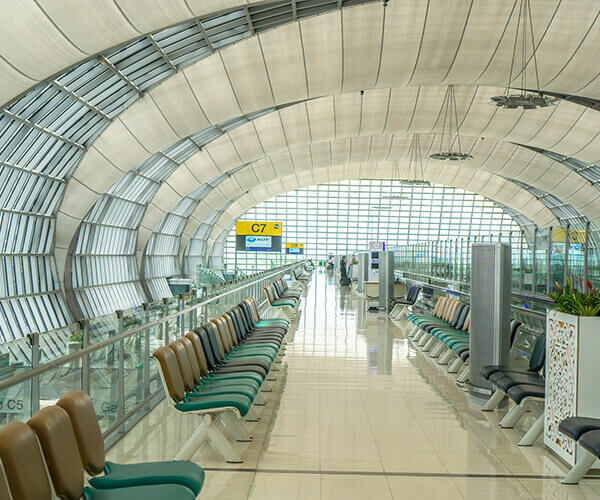
Suvarnabhumi & Don Muang Airports (Bangkok)
Suvarnabhumi opened in 2006, replacing Don Muang as Bangkok’s main international airport. Don Muang soon reopened as the hub for low-cost carriers flying into greater Bangkok, giving the metropolitan area two major airports which today handle 100 million passengers per year.
Considering that Don Muang at its peak serviced only 37 million passengers annually, this means there has been an increase of more than 2.5 x in passenger traffic during that time. But Bangkok is not done yet. Both Bangkok airports are planning upgrades and expansions, which would give Suvarnabhumi a handling capacity of 75 million passengers per year and Don Muang 50 million capacity per year.
This will obviously have an effect on Phuket. Currently, around 6 million people fly from Bangkok to Phuket every year. Doubling the capacity of Bangkok’s airports would mean more (and fuller) flights between the capital and Phuket – a significant boost to tourism on the island.

Phuket International Airport
The new international terminal in Phuket opened in 2016, expanding the technical capacity of the airport from 6.5 million to 12.5 million passengers per year. The year before the upgrade was completed, however, Phuket International Airport had already seen 12.9 million travelers pass through its gates. With that figure expected to quickly reach 20 million, the airport will still not be running anywhere close to the “double capacity” at which it operated immediately prior to its expansion.
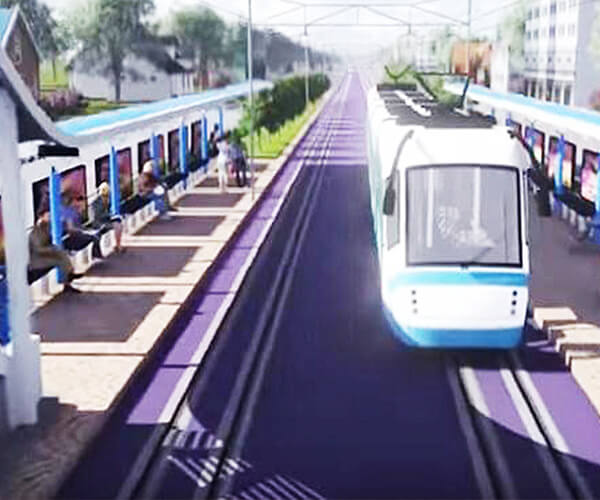
Will Phuket Ever Have Its Own Light Railway Transit System?
Discussions about a light rail system in Phuket started all the way back in the mid-2000’s, nearly 20 years ago. Although the project was approved in 2015, discussions and proposals are still ongoing, but contract tenders are expected to go out during 2025.
The LRT (Light Railway Transit) system will link the north and south of the island, with a proposed length of 58 km. There will be 24 stations with the Phuket International Airport being in the north and Chalong Circle in the south.
Criticism’s of the plan suggest that the island would benefit far greater with a rail system down the west coast to cater for Phuket’s 12 million+ tourists per year, as the system is unlikely to be used by many locals. This would undoubtedly magnify the costs considerably with new tunnel networks required, however, tourists can easily move up and down the west coast to explore other beaches and parts of the west coast, generating far greater revenue than a rail link down the centre of the island.
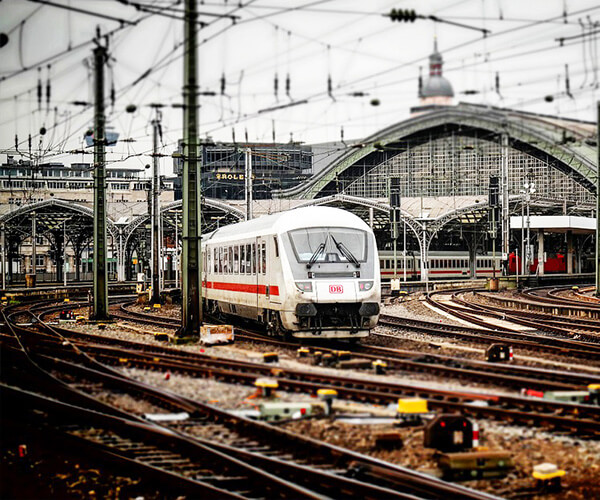
The Pan-Asia Railway Network
How would the proposed high speed rail line from Kunming (in Yannan Province, China) to Singapore affect tourism in this region?
Bangkok lies almost at the centre of the proposed central line to run from China through Laos, Thailand and Malaysia to Singapore. Bangkok is already an aviation hub for Southeast Asia, and the city also has a thriving freight port. A modern rail network would make Bangkok a complete transportation hub.
The Trans-Asian Railway Network Agreement was signed in November of 2006, by seventeen Asian nations, including Thailand. If this line is realised, we could foresee a “Western Extension” connecting Krabi and Phang Nga to Bangkok. Following that, we would not be surprised if the LRT were to extend across the Sarasin Bridge one day, to link up with an offshoot of the Pan-Asia Railway Network.
The next decade could experience a major transformation in travel from China throughout South East Asia. When high-speed rail travel eventually transpires, it will inevitably make Phuket more accessible (directly or indirectly) to 1.5 billion people.
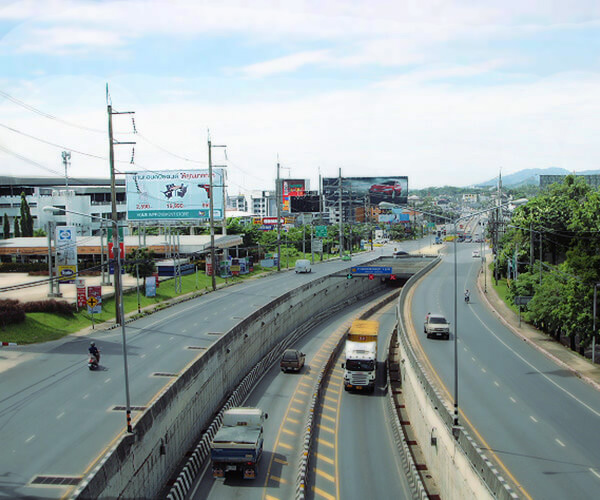
Phuket’s Continuously Improving Road Network
Road work continues at a relentless pace on the island. New underpasses created more than their share of stress, traffic and confusion while they were under construction, but they have been a godsend to motorists in Phuket since they were completed.
Traffic now flows faster at key junction points on the island, especially on the route linking the southern part of the island to Phuket International Airport.
Further underpasses (and overpasses) have been proposed, with the current major project being the new underpass on Thepkasattri Road at the Heroines Monument junction.
Still on the back burner is the Kathu-Patong Tunnel which would shorten the drive into Patong from the east. The tunnel would likely operate on a toll basis, and would improve travel and lessen accidents on Patong Hill, currently considered one of the most dangerous roads on the island.
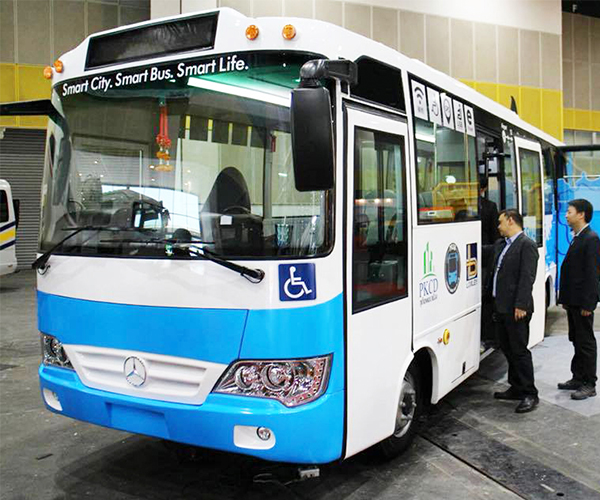
Phuket Smart Bus
A new bus service, set up by the consortium PKCB, was recently introduced to the island. It runs down the west coast, from the Phuket International Airport as far south as Rawai, making 50 stops along the way.
Bus travel often gets a bad rap in Asia, but these modern, air-conditioned buses are comfortable and convenient. And the prices are extremely competitive, with a one day pass only 299 THB, with a 3 day pas only 499 THB. Tourists wishing to explore the west coast can do so at a minimum cost and in the comfort of an air conditioned modern bus.
The Ongoing Development of Phang Nga Province
Although the focus of this report is on Phuket province, it is impossible to ignore the rapid development of the neighbouring province, Phang Nga.
Just as other coastlines in the world have undergone rapid change in a short period of time, the decades ahead will likely see a complete transformation of Thailand’s Andaman Coast, the whole way from Phang Nga to the Burmese border and the Isthmus of Kra.
For hundreds of years, the Phang Nga coastline has been dominated by deserted beaches, fishing villages, small country towns, open grassland and fields with water buffalo. There are also the rain forests and jungles of the province’s gigantic national parks. Put simply, the coastline is unspoiled, making it ripe for development.
If the last 30 years in Phuket are anything to go by, it won’t be a surprise to see more developers and hotel chains creeping northward. And if the proposed Kao Lak airport becomes a reality, expect the development to intensify and accelerate.
New Global Airport Hubs
In the last 20 years, the Dubai, Doha and Abu Dabi have emerged as the most important hubs for anyone flying to South East Asia. Boasting some of the most modern airports in the world, and with their flagship airlines (Emirates, Qatar and Etihad) rivalling – and in many cases bettering – western carriers, these Middle Eastern states have changed the way people fly between Asia and either Europe, Africa or the US.
With the right connecting times, flying via the Middle East is only 1-2 hours longer for Europeans or Americans, but it can save hundreds of Dollars, Euros, or Swiss Franc. Between Asia and South Africa, however, the flights now save time compared with the old London or Frankfurt connections, and they also save Rand.
With cheaper fuel costs air travel has become even more affordable, which has encouraged people to go further afield for their holidays. With convenient routes to Bangkok and Phuket via the Middle East, Thailand is an extremely appealing tourist destination. And, of course, every tourist is a potential future property investor.
The information contained in the Phuket Property Guide and all related Thai Residential articles is provided for general informational purposes only and does not constitute legal or financial advice. Property laws and regulations in Thailand are subject to change. Readers should seek independent legal counsel or official confirmation from the relevant authorities before entering into any property transaction or investment.

Social Contact